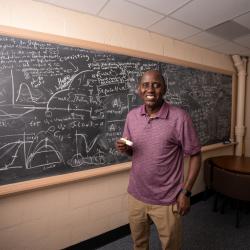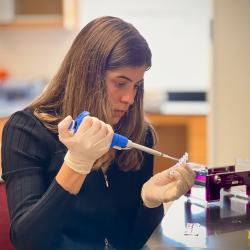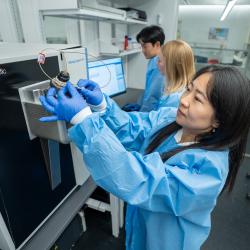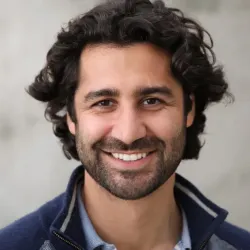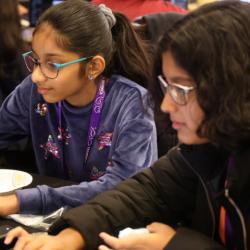From EMT to Computational Biology
UMD sophomore Priya Tyagi became EMT-certified to help people in crisis. Now, she’s pursuing a career in computational biology to demystify disease—including her own rare condition.
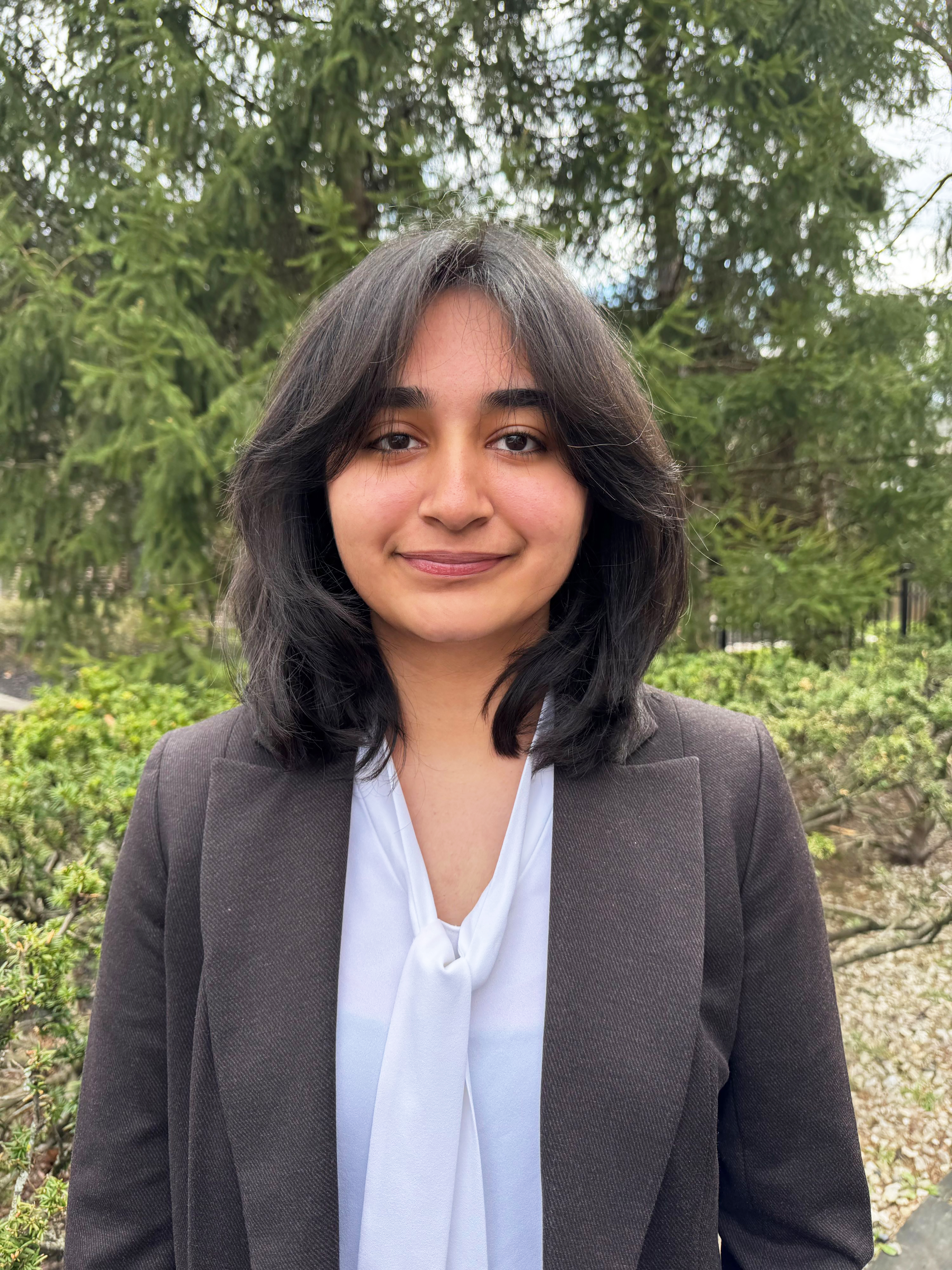
Priya Tyagi loved math, engineering and astronomy from an early age and thought she might like to work for NASA someday. Medicine never crossed her mind—until a life-altering diagnosis made it impossible to ignore.
At the age of 14, Tyagi developed osteoarthritis as a result of slipped capital femoral epiphysis (SCFE), a rare disorder of the hip joint that affects growing adolescents. At 17, she received a total hip replacement that vastly improved her quality of life, but her unanswered questions started to stack up. SCFE has no known cause, and arthritis has no known cure.
“I had no interest in medicine for the entirety of my life, but after countless doctors’ appointments, I had a vested interest in what was happening to me,” Tyagi said. “I am now incredibly fascinated by arthritis, especially since it’s the number one cause of disability in our nation, yet the only treatment is very invasive—the entire replacement of your joint.”
From that point on, Tyagi researched osteology—the study of bones—before diving deeper into the cells and genetics implicated in human disease. In high school, she took an EMT certification class and landed an internship with the Children’s Hospital of Philadelphia that exposed her to computational tools for the first time.
Now a sophomore at the University of Maryland, Tyagi is a biological sciences major with interests in data science, machine learning and artificial intelligence (AI). She hopes to change her major to computer science and believes that computational biology—aided by AI—can help diagnose diseases by quickly analyzing patient data and medical images.
“I'm a firm believer in human-computer interaction,” Tyagi said. “I don't like the idea of a future where hospitals are automated. I believe there should be human involvement throughout the entire process. AI could help streamline that by making tedious tasks a lot easier for physicians or clinical care providers who work with a lot of images.”
‘How to save a life’
While attending high school in the suburbs of Philadelphia, Tyagi started the process of getting EMT-certified. She took evening classes and was often the youngest person in the room, but described the experience as “one of the coolest things I’ve ever done.” As part of her training, she spent a weekend working an overnight shift in a hospital emergency room, where she shadowed doctors and took patients’ vital signs.
“Just being able to learn how to save a life—I can't believe I have that skill set,” Tyagi said. “I'm more interested in a research-oriented career now, but patient care is still incredibly important to me.”
In one of her two internships at the Children’s Hospital of Philadelphia, Tyagi learned about a machine learning model that uses patient clinical notes to predict the onset of genetic diseases. She also conducted research with a data scientist who uses machine learning and data analysis tools to explore links between genetic mutations and pediatric brain tumors.
“Those two internships proved to be fundamental to my experiences and helped me realize that this is something I wanted to do in the future,” Tyagi said. “Image analysis is the field that I find the most interesting at this point.”
Leveraging AI
During her freshman year, Tyagi joined the lab of Steve Mount, a professor emeritus in the Department of Cell Biology and Molecular Genetics, which focuses on RNA splicing, a process by which unnecessary parts are removed from genetic instructions. The lab works on refining SpliceAI, a deep neural network that predicts splice junctions in pre-mRNA transcripts—findings that could help predict genetic diseases.
A summer 2025 internship with University of Pennsylvania researcher Zhi Huang exposed Tyagi to AI’s wider potential in computational pathology. She helped to develop an AI model that finds cancerous tissue in microscopic slide images by linking what it sees with relevant text descriptions. This trained the model to focus on the most important spots in each image, allowing it to identify problem areas. Ultimately, such models could aid the diagnostic process by rapidly and accurately scanning images for warning signs.
“Not only can these models identify if tissue is cancerous or noncancerous, but they also identify where those cancerous regions are, which is incredibly cool,” Tyagi said. “That is something that would take hours to days for pathologists to do, but this machine learning model can streamline that.”
This year, Tyagi is exploring new research opportunities. As a member of the Gemstone Honors Program in the Honors College, she’s helping to build a bio-inspired underwater robot with Team HYDRA. She also just joined the Spatial Biology Lab run by Bioengineering Assistant Professor Alexander Xu in hopes of diving even deeper into bioimage informatics. Her research will focus on evaluating AI segmentation tools and developing computational methods for tissue analysis.
Searching for answers
Outside of research, Tyagi keeps busy with campus activities. As a representative in UMD’s Student Government Association (SGA), Tyagi co-wrote a bill earlier this year that helped students navigate widespread cuts in federal funding. Her bill publicized resources like Pathways to Science, an online directory with scholarships, fellowships, internships and other open opportunities. Tyagi is now SGA’s co-director of research and technology, where she leads data-driven initiatives and technology integration.
This semester, Tyagi was initially “nervous” to cover a section of CHEM 132: General Chemistry I Laboratory as a teaching assistant, but she’s enjoying the process. She hopes to start her EMT work over the winter break and join a local fire department part-time in the spring.
Looking ahead, Tyagi hopes to pursue either a dual M.D.-Ph.D. degree or a more research-oriented Ph.D. program in the future. Ultimately, she hopes her interest in tissue analysis will later translate to cartilage, a form of tissue whose breakdown leads to osteoarthritis.
By helping others, Tyagi believes she can also help herself by getting the answers about SCFE and arthritis she has long searched for.
“It’s crazy to me that so much research has been done, and yet there still isn’t a known cause for SCFE. The fact that this condition is debilitating and can lead to arthritis is a big cause for concern,” Tyagi said. “I'm hoping that data has the potential to uncover the mysteries of these two conditions, and I want to be part of finding those answers.”



